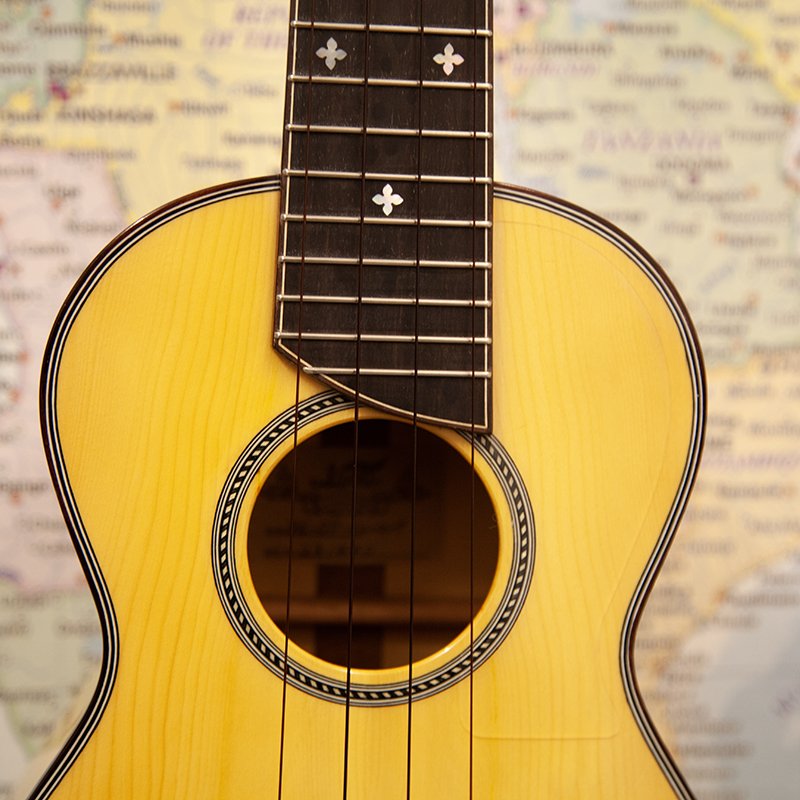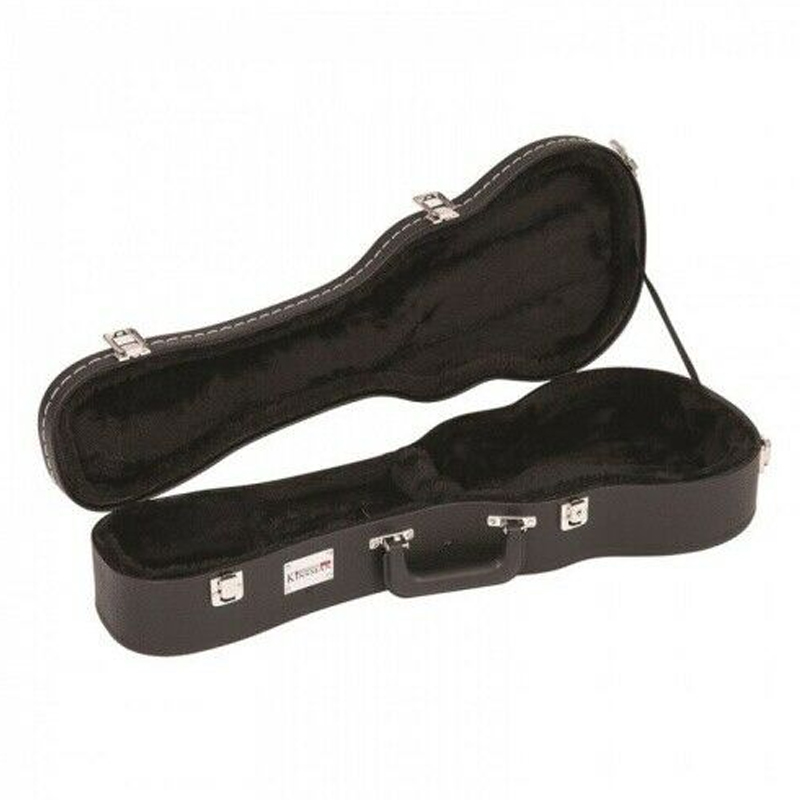
Sumi All Solid Japanese Kaya Handmade Concert Ukulele
This is a fantastic concert uke, made by hand in Japan by Eiichi Sumi. The material is Kaya, which is also known as Japanese Torreya or Japanese Nutmeg-Yew. I went for Kaya in the title as it seemed a bit snappier. It’s, as the alternative names suggest, from a tree grown in Japan which is rare and highly prized. In researching what it was I discovered it’s often used to make boards for traditional games like ‘Go’ and ‘Shogi’. Some of them go for about £15,000! I think I’d rather have this stunning uke and settle for a game of Trivial Pursuits!
Having established what it is, it’s time to talk about how it looks, with its tight grain and yellow hue which is… I suppose, fairly plain, but somehow, with the ebony bindings and classic black and white purfling it comes alive in a very neat, very clean, very Japanese aesthetic. There’s also rope style inlay around the soundhole and a really lovely sweep to the end of the fingerboard. And then of course the petals in mother of pearl and abalone inlaid on the stylish looking headstock. Again, perhaps not something I’d have thought I’d have loved - but it just seems to fit here. All of it shimmers under a gloss finish.
This Sumi concert ukulele has Worth Brown high G strings fitted, as well as Japanese made Gotoh UPT tuners, which are lightweight, smooth and brilliant. They’re geared and work like a dream. It has a 35mm nut width, almost universal amongst concert ukuleles, and a relatively thin neck profile. It’s as graceful to play as it is to look at!
Describing the sound, I fear that by calling it an ‘all-rounder’ doesn’t quite do it justice, although it’s meant to be a good thing! The clarity and note separation is outstanding, and while there’s a smooth, slightly rounded nature to the bass response, this is punctuated by crystal-clear, strong trebles when picking the top strings. It’s ideal for chord melody as that melody is carried beautifully against the backdrop of open strings in a chord. It’s classy, it’s responsive, it’s really really good.
At the bottom of the page you’ll find a number of easy-to-add extras. The Sumi comes with a hard case, so you don’t need one of those. But you might want to consider strap buttons or a Low G.


















